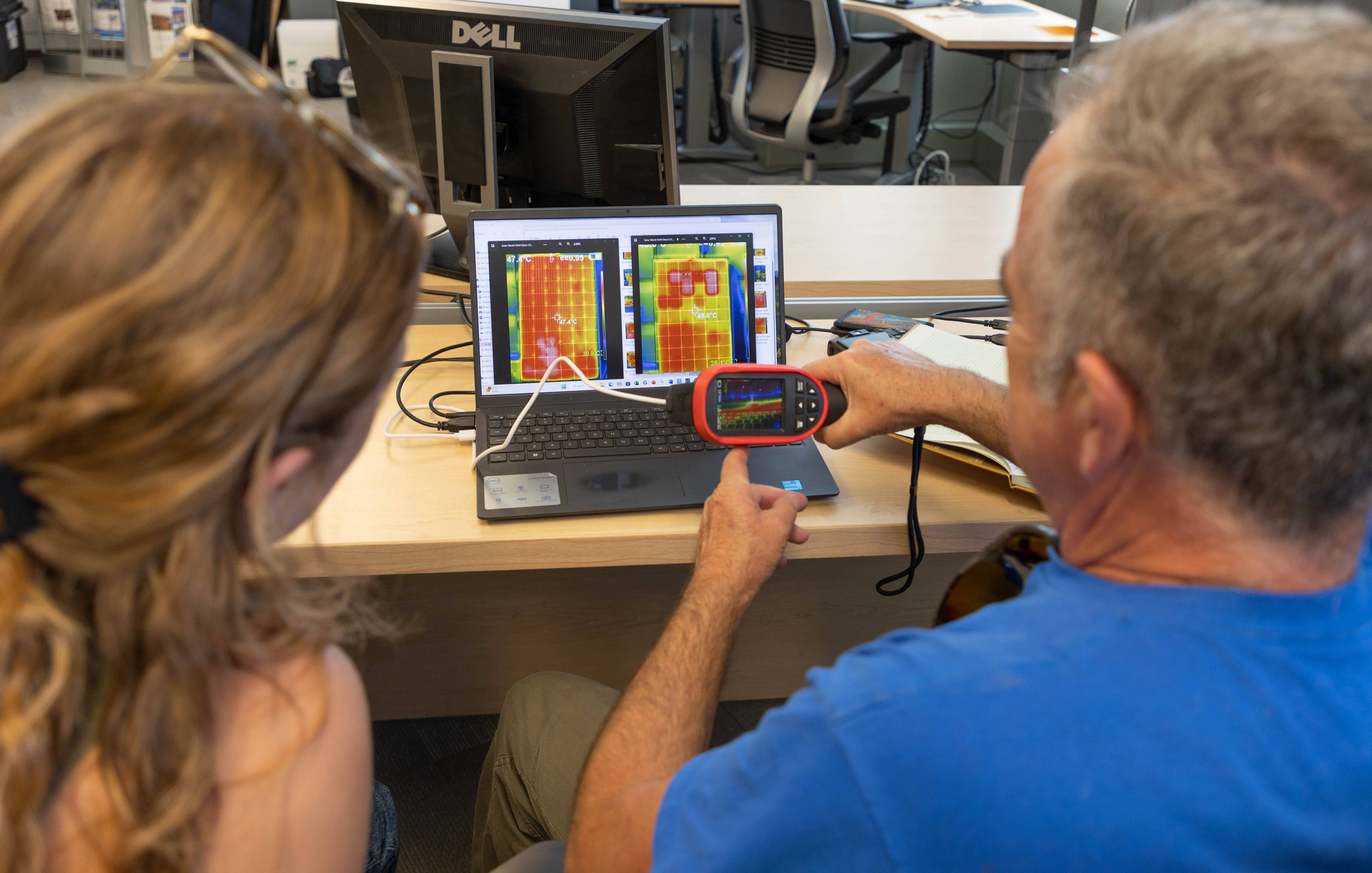Solar Panels Receive Health Check Before Snow-Load Testing

ACEP summer intern Kate Modler and Rich Strömberg look at thermal imaging data taken from solar photovoltaic panels.
June 16, 2023
How do you give solar panels a health check? ACEP summer intern Kate Modler recently found out when working with Rich Strömberg at ACEP’s Energy Technology Facility.
Strömberg, a Ph.D. student at ACEP, and Modler have been testing solar photovoltaic modules used in a prior experiment to simulate snow loads on solar arrays. Strömberg is looking at whether winter snow loads in Alaska could damage solar panels. Fairbanks building code parameters suggest designing for a 50 pound per square foot minimum snow roof load. This load was also used for the research.
The testing of the mono-facial solar panels included a visual inspection of the panels, measuring the maximum power output corrected for real-time solar irradiance and silicon cell temperature, and using thermal imaging with an infrared camera.
The maximum output was tested by arranging the panels in direct sunlight at an ideal angle and testing the energy output by the panels using a wattage meter. The thermal camera showed areas of solar photovoltaic cell damage on the panels.
Their findings indicate the creation of some high-resistance electrical paths as a result of 50 pounds per square foot snow loads. These paths could cause power losses in solar cells by providing an alternate current path for the light-generated current.
For more information on this research, please contact Rich Strömberg at restromberg@alaska.edu.


